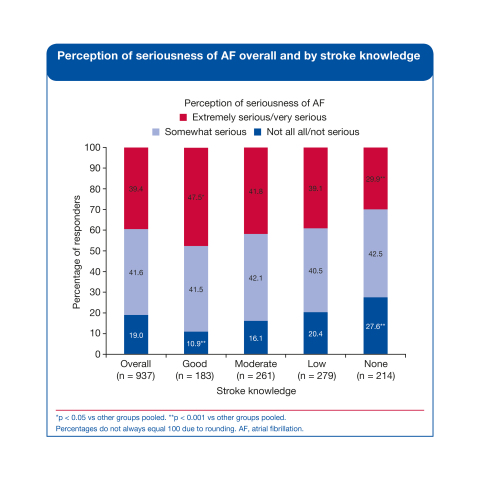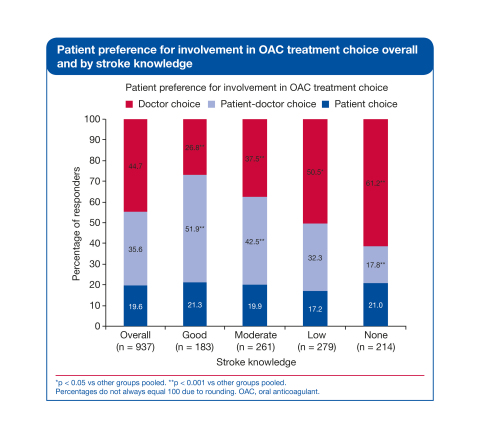- First-of-its-kind survey investigated knowledge of stroke and perceptions about atrial fibrillation (AF) in over 900 AF patients1,2
- Results show that patients actively seek information about treatments to reduce the risk of stroke associated with AF1,2
- Many patients want to be involved in the decision-making process about which oral anticoagulant (OAC) to take1,2
INGELHEIM, Germany -- (BUSINESS WIRE) --
Nine out of 10 patients with atrial fibrillation (AF) surveyed were concerned about the risk of a stroke.1 Oral anticoagulant (OAC) treatments are usually prescribed to reduce this risk3 and the vast majority of patients actively sought information about their treatment.1,2 Many patients even wanted to be involved in the choice of the oral anticoagulant.1,2 These, and further results from a first-of-its-kind international survey of over 900 AF patients, were presented at the 2nd European Stroke Organisation Conference, 10–12 May in Barcelona.1,2
This Smart News Release features multimedia. View the full release here: http://www.businesswire.com/news/home/20160511005516/en/
“For the first time, we have in-depth data about the perceptions and treatment preferences of AF patients across multiple countries,” comments Dr Deirdre Lane, Senior Lecturer in Cardiovascular Health at the University of Birmingham, UK, who led the research. “One key result of the survey is that many AF patients want to be involved in the decision about their oral anticoagulant treatment. This desire mirrors recommendations in current professional guidelines, which call for a consideration of patient values and preferences when choosing oral anticoagulant therapy.”
The survey highlighted the importance of the interaction between patients and their treating physician: for over three quarters (76%) of AF patients, their doctor was the key source of information on their OAC treatment.2 On average, patients consulted two to three information sources in total.2 Still, patients’ knowledge of the causes, signs and symptoms of stroke was inconsistent – only about half (48%) of AF patients have good or moderate knowledge of stroke symptoms, causes and risk factors.1,2
Stroke knowledge influenced a number of patient preferences. Patients with good or moderate stroke knowledge:
- ranked stroke prevention higher as an important factor in the choice of their OAC (65% and 54% vs. an average of 47%)2
- preferred to be involved in the decision about the OAC treatment more often (73% and 62% vs. an average of 56%).2
“Strokes related to AF are particularly severe – they can be fatal and survivors may be left with significant disability requiring life-long care,” advises Jon Barrick, President of the Stroke Alliance for Europe. “It is crucial that AF patients are empowered to actively participate in the management of their own condition, especially as AF is a chronic disease, which requires continuous treatment. An open dialogue with their doctors about their condition, how to manage it, and which treatments to take to reduce their risk of stroke is one crucial element of that.”
This press release is issued from our Corporate Headquarters in Ingelheim, Germany and is intended to provide information about our global business. Please be aware that information relating to the approval status and labels of approved products may vary from country to country, and a country-specific press release on this topic may have been issued in the countries where we do business.
~ENDS~
Please click on the link below for ‘Notes to Editors and References’:
http://www.boehringer-ingelheim.com/press-release/nine-out-10-af-patients-are-concerned-about-stroke
![]()
View source version on businesswire.com: http://www.businesswire.com/news/home/20160511005516/en/
CONTACT:
Boehringer Ingelheim GmbH
Friederike Middeke
Phone: +49 6132 – 77 141575
Fax: +49 6132 – 77 6601
E-mail: press@boehringer-ingelheim.com
Twitter: http://twitter.com/Boehringer
or
More information
www.boehringer-ingelheim.com

Perception of seriousness of AF graph (Graphic: Business Wire)

Patient preference for involvement in OAC treatment choice graph (Graphic: Business Wire)































































































